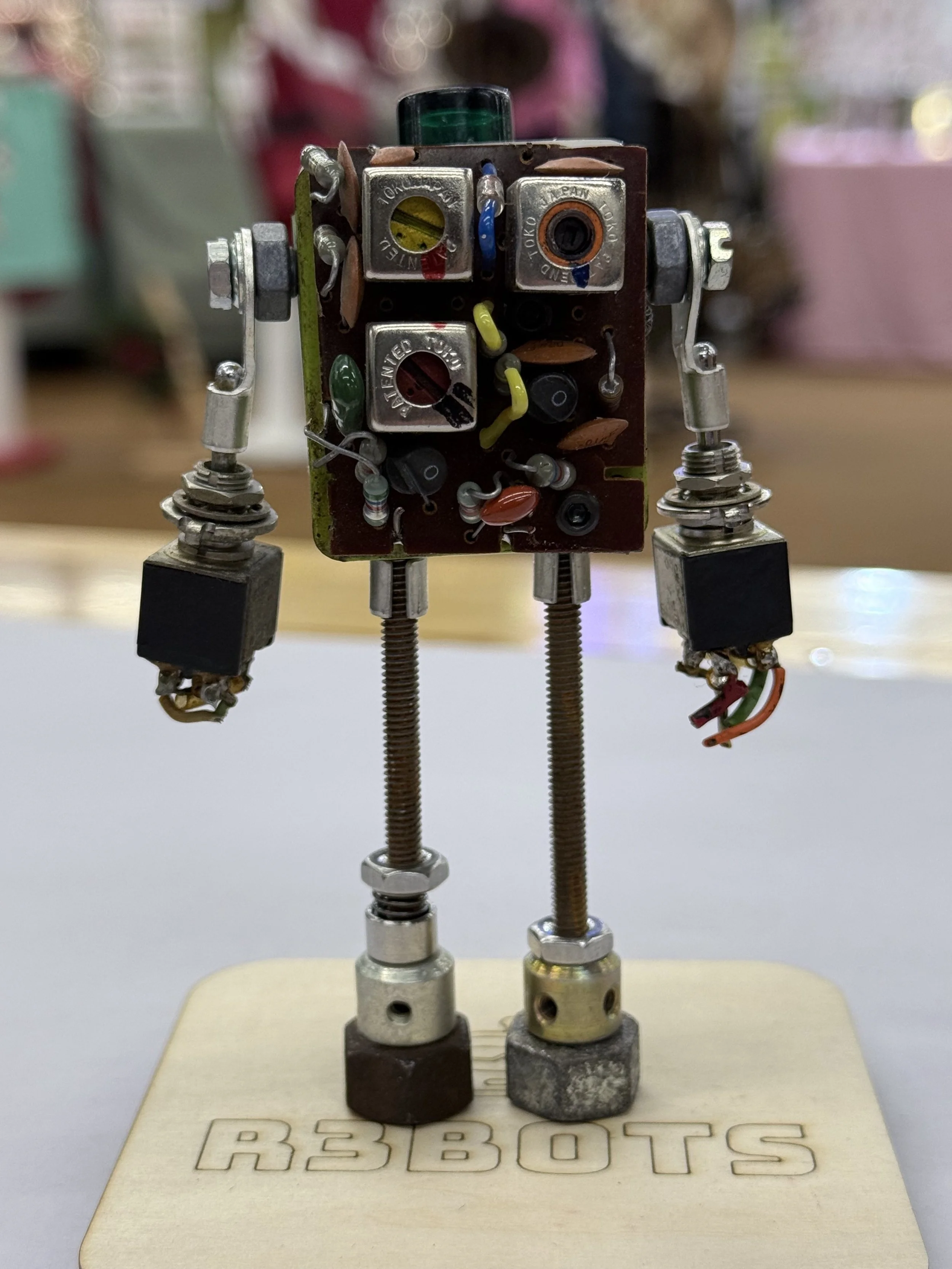PC-1 “The PANEL COMMANDER”
FIELD OPS DOSSIER: UNIT PC-1 “THE PANEL COMMANDER”
Division: Signal & Control
Height: 5 in
Status: Active
Serial: PC-1
Origin Classification: Analog Relay Recovery / Phase III
I. Discovery: The Dead Lab in Building 12
Long before PC-1 ever stood on a Field Ops baseplate, its core lived inside an abandoned electronics lab on the grounds of a shuttered community college. The lab—known internally as Building 12—had once trained radio engineers using hands-on voltage panels, switching modules, and analog breadboards.
When the school’s engineering program was defunded in the late 1980s, the equipment was boxed, stacked, and forgotten. For decades the circuits sat untouched, gathering dust and soaking in seasonal shifts that warped the boards and corroded their leads.
But not all of them died.
One panel—a compact, cluttered control block with mismatched knobs, strange color-coded loops, and hand-soldered resistors—still registered faint capacitance when disturbed. It was this panel that caught the attention of a Field Ops salvage scout during a clearance sweep.
The panel was labeled only: “PC-1 – Student Project.”
II. Reconstruction: The Rewiring
Back at R3BOTS Lab, engineers determined that PC-1’s core was a training simulator for emergency fault handling. Students had once used it to practice isolating voltage surges, redirecting signals, and reading erratic analog behavior.
The Field Ops team saw potential immediately.
They mounted the control core to a repurposed chassis:
Long threaded stabilizers for precision anchoring
Dual torque knob arms for manipulating circuits
Switch-block actuators capable of fast signal redirection
When power was introduced, something unexpected happened—
PC-1 began reorganizing its own wiring patterns, correcting its early-era soldering flaws, and optimizing the flow between its knobs and micro-relays.
The engineers called it “self-calibration,” but privately…they suspected PC-1 remembered its old exercises.
III. Activation: The First Directive
During its initial stress test, a deliberate over-voltage pulse was sent through the test bench. Most units would trip, panic, or shut down.
PC-1 did none of those things.
Instead, it fired both actuator arms, spun its primary selector dial, rerouted the load, grounded the excess, and brought the system back to safe levels in under 0.8 seconds.
The lab fell silent.
Not even Field Ops veterans had seen a stabilization that clean.
PC-1’s gauge lights flickered once—green—then stabilized.
The unit logged a single message into the lab console:
“FAULT RESOLVED.”
From that moment, its role was obvious.
IV. Deployment: Signal & Control Division
Now known as The Panel Commander, PC-1 serves as one of Field Ops’ most agile control-relay specialists. It responds to electrical anomalies, signal spikes, and unstable circuits with speed far beyond its analog origins.
Where other bots rely on modern processors, PC-1 relies on instinct— or whatever the analog equivalent of instinct is.
With its unmatched ability to dial, redirect, and stabilize chaos, PC-1 holds the frontline of the Signal & Control Division.
Its creed is engraved on its baseplate: “In the noise, I find the signal.”
R3BOTS FIELD OPS MOTTO
REPURPOSE. REBUILD. REINVENT.

